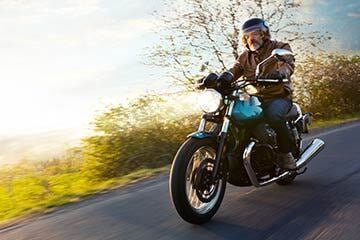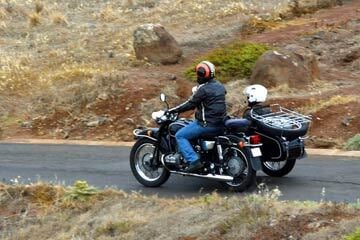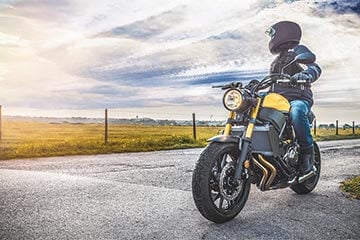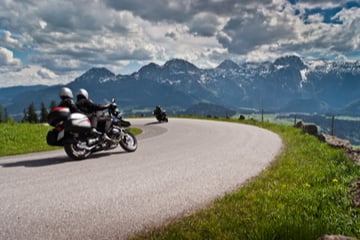What affects the price of motorbike insurance?
Motorbike insurance is calculated on the basis of risk, where the likelihood of making a claim leads to higher insurance costs. Numerous different factors are taken into consideration, including the following:
Your location
Some postcode locations will be higher risk than others. For example some areas will have a higher incidence of collisions, whereas others may be hotspots for vehicle theft.
Riding history
When applying for insurance, you need to disclose any claims or motoring convictions. If you have a good riding history, this'll help to keep your bike insurance down.
Your age
Generally speaking, younger riders are more likely to be involved in accidents. Provided you remain claim-free, you should see your insurance prices get cheaper as years go by.
Value of your motorbike
How to get cheaper motorcycle insurance?
If you're looking for ways to lower your insurance costs, check out our guide on how to get cheaper motorbike insurance. But in short, here are a few useful pointers:
- Shop around and compare quotes. This one can't be understated... It's always best to compare quotes from multiple providers to find the right cover at the right price. Don't accept the first quote you get, and don't auto-renew.
- Take a motorbike course. Bike insurance companies might give you a cheaper quote if you've taken an advanced riding course. It never hurts to improve your skills.
- Increase security measures. Park your bike somewhere secure overnight, and consider adding extra security features. Find out more about motorbike security devices and insurance.
- Pay annually. If you can afford to pay your insurance in one go, it's always better to pay for the year upfront. This is because monthly payments come with interest attached.
- Increase your voluntary excess. If you increase your excess - the amount you pay yourself if you make a claim - this tends to reduce your premiums. This is because you're shouldering more of the risk. Just be sure to set it at an amount you can afford if you need to make a claim.
- Assess optional extras. Keep things lean, and only pay for cover that you need. If you have pillion cover, say, but you don't intend on taking any passengers, see if you could save by removing it from your policy.
- Build up your no-claims bonus (NCB). For each claim-free year of riding you get under your belt, the more you build up your NCB. Insurance providers will normally discount your cover for each year of NCB you have.
Types of Ducati motorcycle insurance
When you buy motorbike insurance for your Ducati, there are 3 levels of cover to choose from:
Third-party
Third-party, fire and theft
Comprehensive
What should I consider when purchasing insurance?
-
Repair costs
-
Higher insurance premiums
Due to the premium parts required, repairing a Ducati can be more expensive than a regular motorbike. This is likely to influence your insurance costs.
While this is dependent on the model, it's likely you'll have to pay more than average for insurance. This is due to the cost of repair, but also the high performance increasing the chance of a collision.
-
Your Ducati usage
-
Storage conditions
What you're using it for will also influence the cost. For instance, a daily commute could attract higher premiums than occasional rides. You could lower costs by keeping your mileage down.
You could lower insurance costs by taking good care of your bike. Keeping it locked up safe in a garage could lower your premiums. You can also increase its longevity with regular maintenance.
Motorbike insurance optional extras
When applying for bike insurance, motorbike insurance providers offer optional extras to your cover. While these add-ons are occasionally included as standard, there's usually a fee for adding them to your policy.
Ducati history and facts
Ducati was founded in 1926 in Bologna, Italy, originally producing radio components. But in 1946, after the Second World War, the company shifted its focus to motorcycles. Its first foray into bikes was the Cucciolo (Italian for 'puppy'), a small engine mounted on a bicycle frame. These sold over 200,000 units by the 1950s.
The first complete motorbike it produced was the Ducati 60 in 1949. In the decade that followed, Ducati began producing larger, performance-orientated motorcycles, gaining recognition for speed and reliability. In 1954, engineer Fabio Taglioni joined Ducati, revolutionising the brand with the desmodromic valve system - a key feature of its engines that enhanced performance.
Ducati became synonymous with racing, achieving multiple victories in MotoGP and World Superbike Championships. Iconic models like the Monster, Panigale and Multistrada solidified the brand's reputation - combining Italian craftsmanship, innovative engineering and powerful performance.
Today, Ducati remains a leader in premium motorcycles, blending tradition with cutting-edge technology. It has also expanded into producing electric and hybrid motorcycles.
Fun fact: It takes Ducati just 88 minutes to produce its iconic Monster motorbike!
Bonus fun fact: Ducati has its fans in Hollywood, with notable film appearances including Venom, Catwoman, Transformers 2 and Terminator Salvation.






